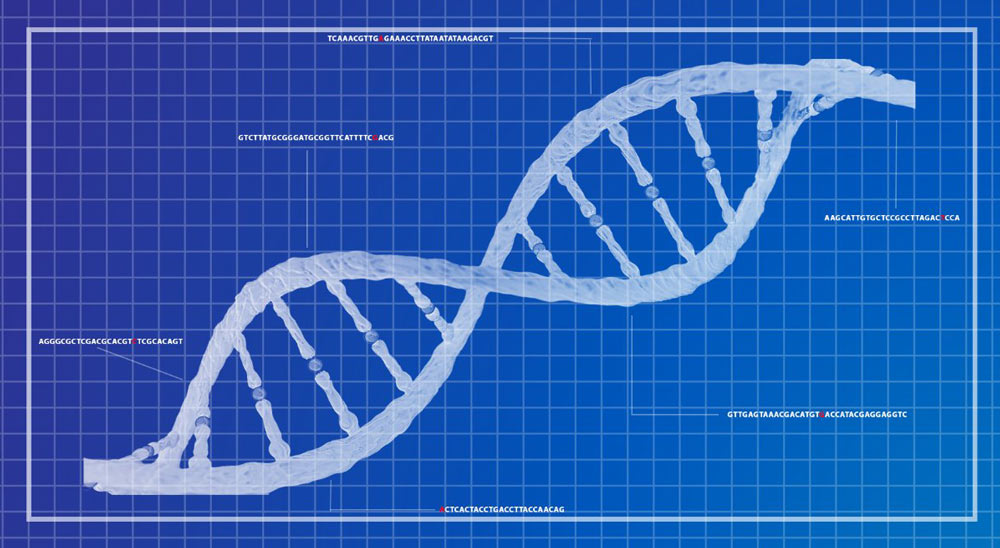
This may be a surprising fun fact: 98-99% of all human DNA is "junk."
By "junk," I mean it appears to serve no purpose.
If you haven't read any of our past blog posts on how DNA works, here's a quick step-by-step summary:
- DNA is a code, locked away in our chromosomes.
- This code contains instructions for various functions in our bodies.
- RNA translates those instructions into messages that create proteins.
- Those proteins then perform whichever cellular instruction the DNA coded for.
However, as stated in the beginning of this blog post, 98-99% of our DNA appears to code for nothing at all.
This led many scientists over the years to think of it as useless and refer to it as "junk DNA."
This is an attitude that has shifted over time. In fact, the idea that "junk DNA" may not be junk dates back to 1977, when scientists Richard Roberts and Phil Sharp discovered that non-coding sequences often interrupt coding sequences. This means that instructions for creating proteins is often in pieces and needs the "junk" to be removed so the message can be pieced back together.
Imagine a jigsaw puzzle where half the pieces in the box don't actually fit anywhere in the puzzle and were just put there to throw you off and make the puzzle harder. It's almost like your DNA really is a secret code with RNA spies on secret missions relaying confidential messages that need to be decrypted by the select recipients.
Nobel Prize winning scientist (and former mentor to CRI Genetics' own Alexei Fedorov) Walter Gilbert later called these interruptions "introns." Roberts and Sharp won a Nobel Prize themselves in 1993 for their discovery of introns.
This was the beginning of a shift in perspective toward "junk DNA." While many still thought of introns as useless, some scientists believed we just didn't understand their purpose yet.
Now, a recent study out of Tel Aviv University, published in Open Biology, suggests that introns are not only not-junk, but may serve a vital function in the tree of life.
Like chromosomes, the numbers of introns varies widely from species to species. The researchers in the study hoped to answer this simple question: WHY?
Nature, particularly when it comes to biology and life, tends to be relatively efficient. Why would it put so much "junk" in DNA?
And given nature's tendency to delete DNA as it mutates over time as part of that tendency toward efficiency, why wouldn't there be less and less "junk DNA" in the average genome?
The answer proposed by the researchers is an interesting one... Perhaps the "junk DNA" provides a cushion around sensitive coding sequences that are necessary for our survival. Put in the simplest way possible, the intron interruptions may be there to ensure nature doesn't accidentally delete something we need, like code for our immune system function or cellular metabolism.
In the jigsaw puzzle analogy, this may mean that all the "useless" pieces aren't there to make it harder for you to assemble the puzzle, but are really there to make sure that IF you lose any pieces, it's less likely to be a piece you need.
OR if James "RNA" Bond has a few too many martinis (shaken, not stirred) and drops a few pages of the super secret message he's supposed to be delivering, MAYBE they'll at least be blank pages.
So the lesson to learn here from nature... Is that if you really don't want to lose something, just surround it with a bunch of decoys!
In other words: Cover it in junk, so you lose it on purpose instead of by accident.
Perhaps not the life hack you expected to learn from Mother Nature today...
This is, of course, just a hypothesis. As with any field of science, more research is needed to fully understand the purpose(s) of non-coding DNA. There may be many more purposes to discover and we can certainly expect some related discoveries to be proven and disproven over time.